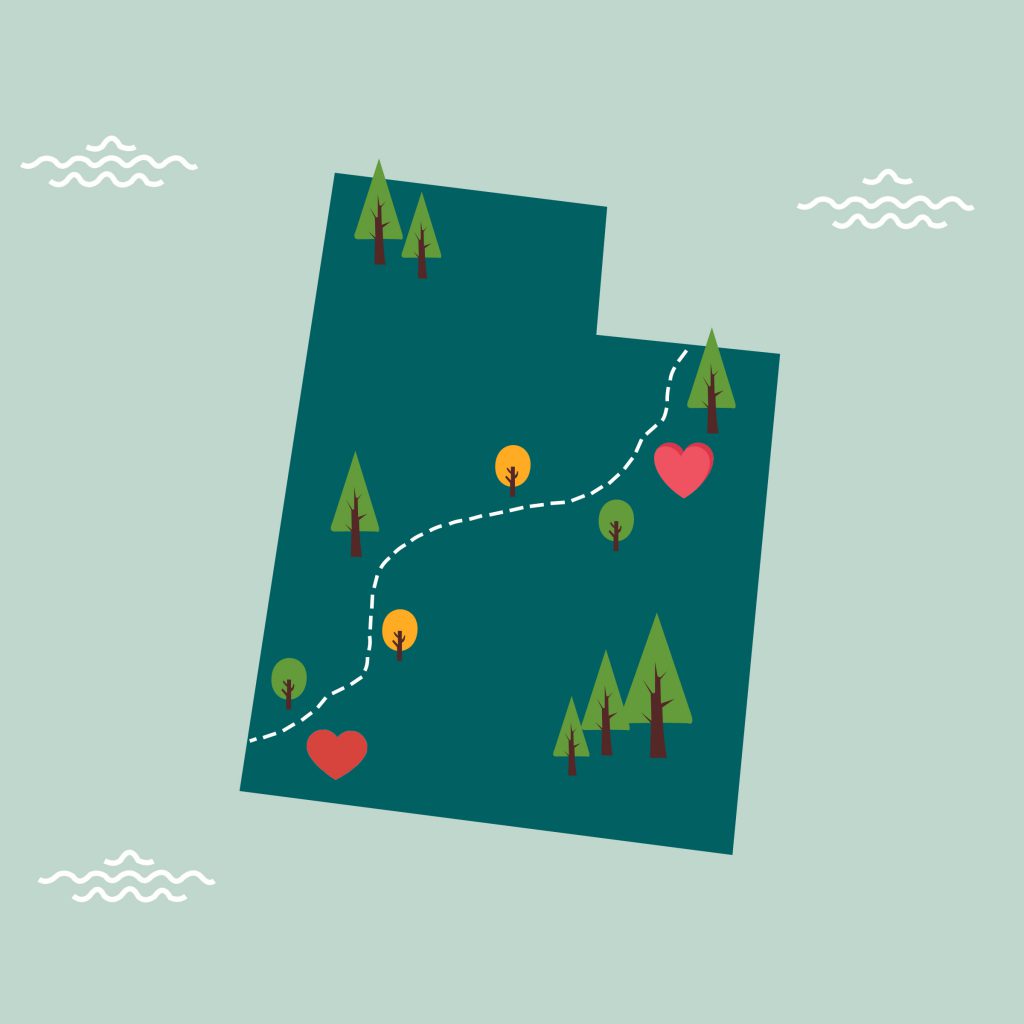St. George is home to many people, both students and non-students, with a population of a little less than 100,000 residents.
This city is home not only to Utah Tech University but to many landmarks, historical sites and ever-growing communities.
Aviation navigation arrows
In the 1920s, there were aviation navigation arrows that were built around St. George to help pilots navigate their way over Utah.
There are four of these 50-foot concrete arrows throughout St. George that were used to navigate passenger flights from Los Angeles to Salt Lake City.
Mike Nelson, director of the Center for Inclusion and Belonging, said, “Over here in Bloomington, there’s a navigation arrow, and then if you go up the freeway toward Quail Creek, [there’s] another one.”
These arrows were placed every 10 miles and were lit by steel posts that held coal oil lamps to illuminate the arrows at night.
“They’re close to hike up [to] and they’re a super easy [hike]…That’s one of my favorite [facts],” Nelson said.
Paiute campsite on campus
The Nuwuvi, a term associated with the Southern Paiute peoples, were historically hunter-gatherers. Before colonial influence, their territory spanned from what we call today southeastern California, southern Nevada, northern Arizona and most of southern Utah.
Several individual groups of Southern Paiutes lived within these four states, with the total land mass encompassing nearly 30 million acres. In Washington County, where Utah Tech is located, lives the Shivwits Band of Paiutes.
Chloe Batt, an assistant librarian and archivist who is head of the special collections at the campus library, said the library has many sources to verify that Utah Tech stands on an old Paiute campsite.
In the late 1800s, most Southern Paiutes lived under the influence of a headman named Taugu, who lived in Cedar City. There were still Southern Paiutes scattered across southern and southwestern Utah, with settlements that could be found along the Santa Clara River and the Virgin River.
This area specifically had received the majority of the massive Dixie settlement push by the members of The Church of Jesus Christ of Latter-day Saints around a similar time.
According to a book provided by Batt named “NUWUVI: A Southern Paiute History,” it said: “Their hunting and gathering sites were being depleted quickly by over-grazing cattle, and their campsites were taken up by white settlements and farms. These conditions, to some extent, caused the Nuwuvi living on the Santa Clara and Virgin to migrate.”
Academic facts
The campus has gone through several different iterations including building construction, name changes and leadership changes.
Jyl Hall, director of public relations, said, “We are celebrating 10 years of university status. [There are] a lot of fun facts about how much we have grown since 2013.”
The university held a presidential address given by President Richard “Biff” Williams Sep. 20 proudly talking about all the changes that have occurred since receiving university status.
Utah Tech stands as the state’s most affordable university with 96% of students receiving grants, financial aid and various scholarships.
An estimated 81% of the 12,000 enrolled student body at Utah Tech are initially from Utah.
The school has also built and renovated 42 spaces and is in the process of building more.
In a community that many call home, there is plenty of history and fun facts to comb through about the area. No matter where a student may be from, it’s important to not only know the history of the school they are attending but the area surrounding the school as well.




